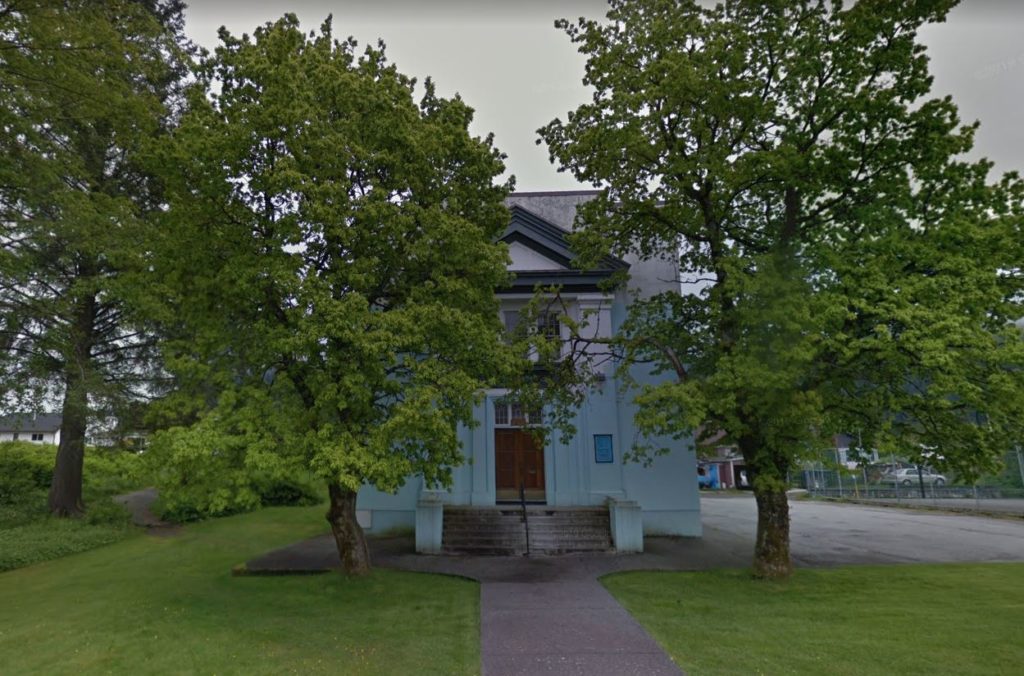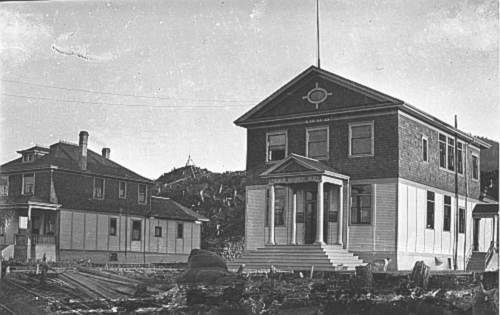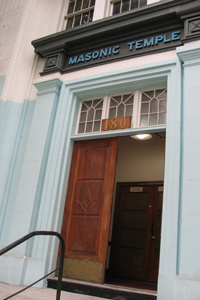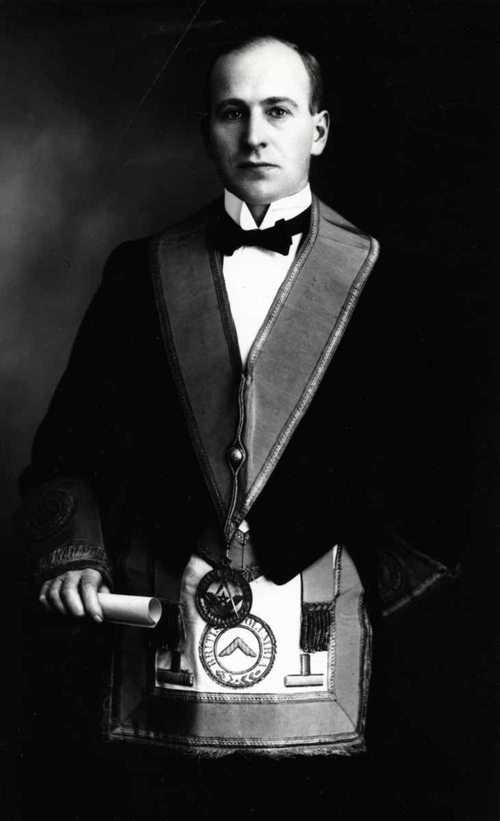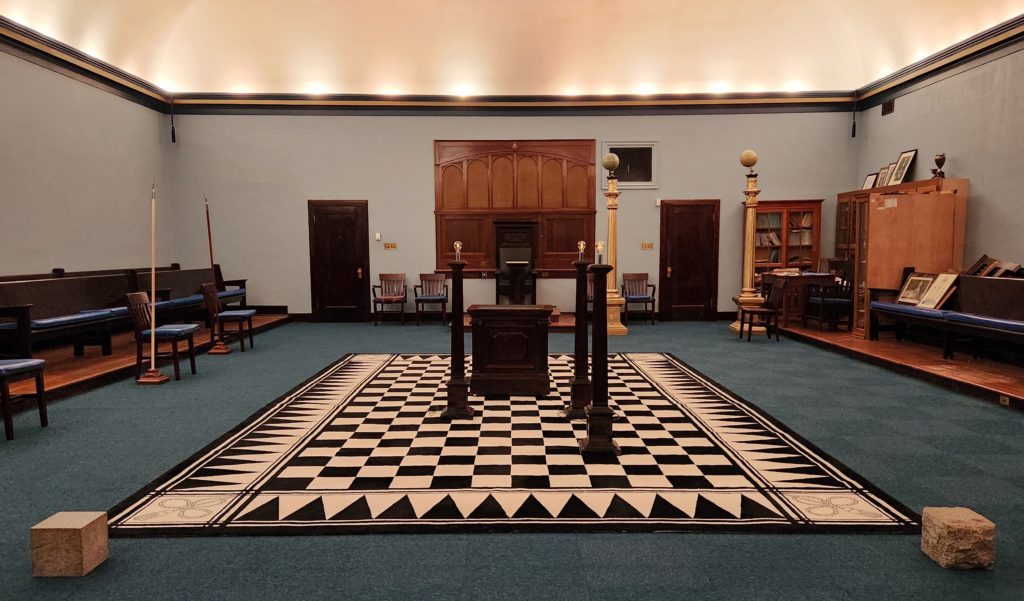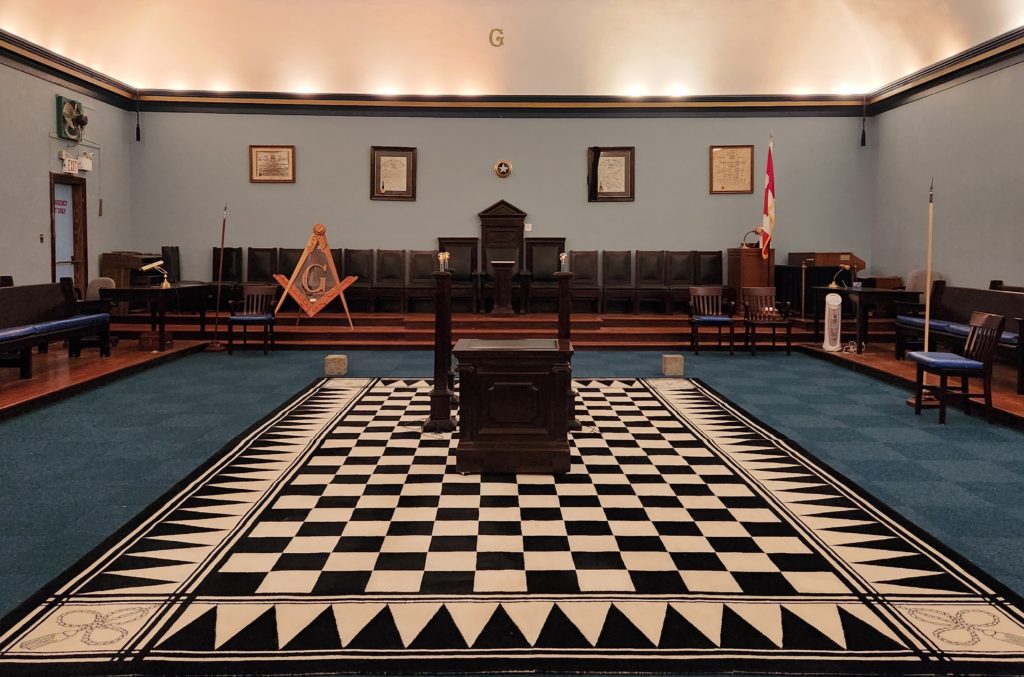
- Details
- prev
- next
- Share
- Get directions
- prev
- next
About the Lodge
Two lodges share this landmark building: Tsimpsean Lodge No. 58 which practises "Ancient Work", and Tyee Lodge No. 66 which practises "Canadian Work".
Tsimpsean Lodge, whose name means “Inside the Skeena River” in the local indigenous language, was granted its Charter in 1910. Tyee Lodge, whose name originated from an area trading language, means "chief" and may also refer to a large Chinook salmon, received its Charter in 1912. Both Lodges have been in continuous operation since inception.
The current Lodge building was opened on January 12, 1932, after its predecessor burnt to the ground in 1930. The destroyed building had been a provincial courthouse, later purchased in 1923, and pulled on skids by a team of horses to this site from the downtown area.
Location
180 6 Avenue E, V8J 1W1, Prince Rupert, British Columbia, Canada
Province
Lodges that meet here
Tsimpsean Lodge No. 58
This city is situated on Kaien Island adjoining the Tsimpsean Peninsula near the mouth of the Skeena River south of the Alaskan Panhandle: The town site and the harbour were named after Prince Rupert, the dashing cousin of King Charles II of England, and the first Governor of the Hudson's Bay Company. While Prince Rupert was a relatively new town, the members of the Craft ready to join in the movement numbered nearly one hundred, hailing from many jurisdictions.
On June 28, 1908, thirty Masons responded to a call for a preliminary meeting of the Prince Rupert Masonic Club with a view to organization and to arrange for application being made to the Grand Lodge of British Columbia for permission to organize a Lodge of Instruction.
On July 8, 1908, a second meeting was held where "a bill was presented for $21.85 covering the cost of 24 chairs, four yards of burlap, lumber and a lock."
On June 3, 1909, the Club considered what the Lodge should be called; "Triune", "Vespuga", "Shawatlan", "Tsimpsean", "Centra Costa" or "Kaien Island" were all considered. On the second ballot, Tsimpsean beat Kaien Island 15 to 10 out of the 25 votes cast.
Cariboo Lodge No. 4, "The Old Mother Lodge of Northern British Columbia," 600 miles to the east over a rough and rugged road, endorsed the petition for a Lodge of Instruction at Prince Rupert and recommended the application for a dispensation, which was issued by the Grand Master on December 23, 1909.
The Lodge was instituted by Right Worshipful Brother J. J. Miller, Deputy District Grand Master of District 2, on January 15, 1910. He travelled all the way from Vancouver for that purpose. The charter for Tsimpsean Lodge No. 58, at Prince Rupert, was ordered by Grand Lodge on June 23, 1910, and was constituted on July 23, 1910 by the District Deputy Grand Master under warrant.
The Lodge had seventy-three founding members, and from the date of the inception of the Club until the dispensation was granted, it held twenty-nine meetings. On June 17, 1909, the Masonic Club, which had been in existence for exactly a year, expired.
The name of the Lodge comes from the Tsimshian indigenous people. The Lodge uses the American work for its ritual.
Tyee Lodge No. 66
Tyee Lodge No. 66
The early history of Freemasonry in Prince Rupert has been preserved through the good fortune of the efforts of one Right Worshipful Brother Thomas McClymont, who came to the townsite in August of 1908, long before the city was incorporated. He recorded his eye-witness accounts of the early days of Masonry in the area in his “History of Tsimpsean Lodge”, which shares this Lodge building.
Right Worshipful Brother McClymont recorded in great detail the life of this infant city and the first meetings of Masons at a time when the community was not much more than a construction camp. Right Worshipful Brother McClymonts document is invaluable, as a background for the history of Tyee Lodge.
The formation and institution of Tsimpsean Lodge No.58, in 1909, saw seventy-three charter members, with Brethren coming from jurisdictions with different rituals. By majority vote, Tsimpsean Lodge adopted the American work for its ritual.
In 1911, with further growth in Masonic membership in Prince Rupert, a number of Freemasons who didn’t fancy the American ritual being performed by Tsimpsean Lodge, petitioned Grand Lodge to form a new and separate Lodge that would practice the Canadian ritual. The new Lodge took its name “Tyee” from the Chinook language for “Chief” or “King”. The Lodge received dispensation on January 31, 1912, and was constituted by the Grand Master at an Emergent Communication of Grand Lodge on July 31, 1912.
The first Worshipful Master of Tyee Lodge was Worshipful Brother D.H. Morrison. Over the course of its history, Tyee Lodge has produced five Grand Masters, Most Worshipful Brothers Alexander M. Manson (1925-26), Richard G. Large (1955-56), James H. Nordan (1965-67), Alexander S. Mitchell (1976-77), and G. Murray Webster (2012-13).
Most Worshipful Brother Manson was elected to the B.C. Legislature in 1916, re-elected four times, was the Attorney General and Minister of Labour, and eventually appointed to the Supreme Court of B.C., serving there from 1936 to 1961.

